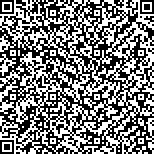李金萍,徐颖,康湘莲,等.表面肌电网络指标在脑卒中后偏瘫患者多肌肉控制障碍评估中的作用[J].中华物理医学与康复杂志,2025,47(5):446-452
扫码阅读全文

|
| 表面肌电网络指标在脑卒中后偏瘫患者多肌肉控制障碍评估中的作用 |
|
| |
| DOI:10.3760/cma.j.cn421666-20221128-01254 |
| 中文关键词: 脑卒中后偏瘫 表面肌电图 网络指标 运动控制障碍 |
| 英文关键词: Stroke Hemiplegia Electromyography Network indices Motor control dysfunction |
| 基金项目:山东省重大创新工程项目(2019JZZY021010);苏州市医疗卫生科技创新关键技术攻关项目(SKY2021053);苏州市医疗卫生创新应用研究项目(SKY2022186) |
|
| 摘要点击次数: 1733 |
| 全文下载次数: 1432 |
| 中文摘要: |
| 目的 观察脑卒中后偏瘫患者在睁眼和闭眼条件下静止站立时多肌肉表面肌电(sEMG)的网络指标特征,并分析其临床意义。 方法 选取男性脑卒中后偏瘫患者10例作为偏瘫组,然后募集性别、年龄与偏瘫组相匹配的男性健康志愿者10例作为对照组。2组受试者均进行睁眼站立30 s和闭眼站立30 s测试,采集2种测试条件下2组受试者双侧臀大肌、股直肌和股二头肌的sEMG信号,计算得出线性时频域指标,包括均方根值(RMS)和中位频率(MF);网络指标从sEMG信号构建的多重递归网络和加权网络中提取,包括平均层间互信息(I)、平均边缘覆盖率(ω)、聚类系数(C)、平均最短路径长度(L)和度中心性(DC)。 结果 闭眼时,偏瘫组双侧臀大肌的RMS值均显著高于对照组,且偏瘫组健侧股直肌和股二头肌的RMS值均显著高于偏瘫组患侧和对照组,差异有统计学意义(P<0.05)。偏瘫组健侧股直肌闭眼时的RMS值为(11.97±8.24)μV,显著高于组内健侧睁眼时的(6.25±5.08)μV,差异有统计学意义(P<0.05)。偏瘫组睁眼时健侧臀大肌的MF值显著低于对照组睁眼时(P<0.05)。偏瘫组闭眼时健侧臀大肌的MF值均显著低于偏瘫组患侧闭眼时和对照组闭眼时(P<0.05)。睁眼和闭眼时,偏瘫组的I和ω值均显著高于对照组,L值则显著低于对照组(P<0.05)。睁眼时,偏瘫组双侧臀大肌、股直肌、股二头肌的DC值均显著高于对照组;闭眼时,偏瘫组双侧臀大肌、股直肌和健侧股二头肌的DC值均显著高于对照组,差异均有统计学意义(P<0.05)。偏瘫组睁眼和闭眼时健侧臀大肌,以及闭眼时健侧股二头肌的DC值均显著高于组内患侧(P<0.05)。 结论 脑卒中后偏瘫患者站立时,双侧肌肉同步调节程度过高,健侧肌肉,尤其是臀大肌的参与度明显升高。sEMG功能性网络指标(如I、ω、L、DC)可反映多肌肉间的同步可调节性和单肌肉参与度;sEMG网络化算法可能成为脑卒中后偏瘫患者神经肌肉障碍定位和定量评估的新方法。 |
| 英文摘要: |
| Objective To observe the characteristics of multi-muscle surface electromyography (sEMG) network indices during static standing among hemiplegic stroke survivors, and to evaluate the value of the indices in assessing neuromuscular dysfunction. Methods Ten male stroke survivors with hemiplegia were recruited into the hemiplegia group, and 10 age-matched healthy males were chosen as the control group. Both groups were required to perform 30s static standing tasks with their eyes open and closed. The sEMG signals from the bilateral gluteus maximus (GM), rectus femoris (RF) and biceps femoris (BF) muscles were synchronously collected. Linear time-frequency domain indices were then calculated from the sEMG signals, including the root mean square (RMS) and median frequency (MF). Network indices were extracted from the multiplex recurrence network and weighted networks were constructed from the sEMG signals, including the average interlayer mutual information (I), average edge overlap (ω), clustering coefficient (C), average shortest path length (L) and degree of centrality (DC). Results With the eyes closed, the RMS values of the bilateral GMs of the hemiplegia group, as well as the values for the RF and BF on the unaffected side were significantly higher than the control group′s values. In the hemiplegia group, the RMS values of the RF and BF muscles on the unaffected side were significantly higher than on the affected side during standing with the eyes closed. For the RF muscles the RMS values on the unaffected side were, on average, significantly higher than with the eyes open. The MF of the GM muscles on the unaffected side in the hemiplegia group was significantly lower than the average MF values of the bilateral GM muscles in the control group with the eyes open or closed. With the eyes closed, the MF of the unaffected-side GM was significantly lower than that of the affected-side GM in the hemiplegia group. Compared with the control group, the hemiplegia group showed a significant increase in I and ω values, but a significant decrease in L values with the eyes open or closed. The DC values of the bilateral GM, RF and BF muscles in the hemiplegia group were significantly higher than among the control group with the eyes open, which was also true of the bilateral GM and RF muscles with the eyes closed. With the BF muscles it was true only of the unaffected side. In the hemiplegia group, the DC values of the unaffected-side GM with the eyes open or closed, and of the unaffected-side BF with the eyes closed. Conclusions When standing still, hemiplegic stroke survivors exhibit increased overall synchronous muscle adjustment with involvement of unaffected-side muscles, especially the GM. sEMG network indices such as I, ω, L and DC can assess multi-muscle synchronous adaptability and the involvement of single muscles. sEMG network algorithms thus have potential as a new method for localizing and quantitatively assessing neuromuscular dysfunction among such patients. |
|
查看全文
查看/发表评论 下载PDF阅读器 |
| 关闭 |
|
|
|